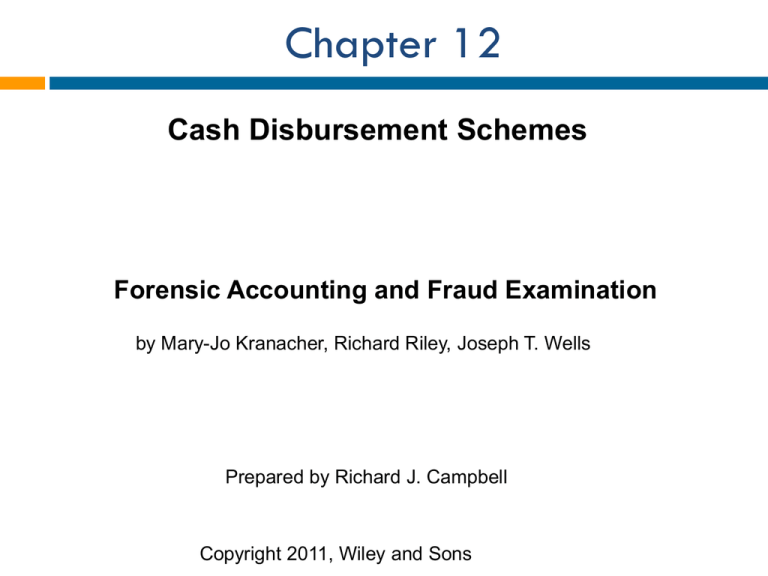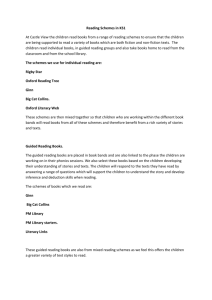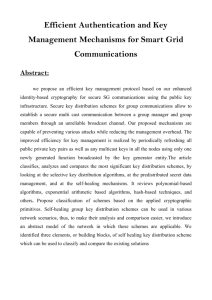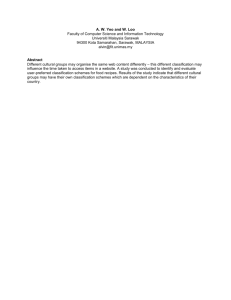
Chapter 12
1
Cash Disbursement Schemes
Forensic Accounting and Fraud Examination
by Mary-Jo Kranacher, Richard Riley, Joseph T. Wells
Prepared by Richard J. Campbell
Copyright 2011, Wiley and Sons
Learning Objectives
2 12-1 Identify the five major categories of fraudulent disbursements.
12-2 Describe a shell company and explain how it is formed.
12-3 Discuss how pay-and-return schemes work.
12-4 Identify the five principal categories of check tampering.
12-5 Differentiate between forged maker and forged endorsement schemes.
12-6 Discuss ways to prevent and detect the theft and alteration of outgoing company
checks.
12-7 Explain what is meant by a ghost employee, and describe the four steps needed
to make this scheme work.
12-8 Describe the methods employees use to overstate legitimate expenses on their
expense reports.
12-9 Identify red flags that are commonly associated with fictitious expense schemes.
12-10 Compare and contrast fraudulent disbursements at the cash register with other
register frauds
12-1
BILLING SCHEMES
3
Billing schemes generally fall into one of three
categories:
1. Shell company schemes
2. Nonaccomplice vendor schemes
3. Personal purchases schemes
12-2
False Billings from Shell Companies
4
Figure 12-1
12-3
Shell Company Schemes
5
12-4
Forming a Shell Company
Submitting False Invoices
Self-Approval of Fraudulent Invoices
‘‘Rubber-Stamp’’ Supervisors
Reliance on False Documents
Collusion
Purchases of Services Rather than Goods
Pass-Through Schemes
Preventing and Detecting Shell Company Schemes
6
12-5
Identifying Shell Company Invoices
Testing for Shell Company Schemes
Verifying Whether a Shell Company Exists
Identifying the Employee behind a Shell Company
Billing Schemes Involving Nonaccomplice Vendors
7
Pay-and-Return Schemes – In pay-and-return
schemes, these employees do not prepare and
submit the vendor’s invoices; rather, they
intentionally mishandle payments that are owed to
the legitimate vendors
Overbilling with a Nonaccomplice Vendor’s
Invoices -
12-6
Pay-and-Return Schemes
8Figure 12-2
12-7
Preventing and Detecting Fraudulent Invoices from a
Nonaccomplice Vendor
9
Organizations should maintain up-to-date
approved vendor lists that include contact and
mailing information for approved vendors
Pay-and-return schemes can be mostly prevented if
the duties of purchasing, authorizing, and
distributing payments are separated and if all
invoices are matched to purchase orders before
payments are issued.
12-8
Personal Purchases with Company Funds
10
Personal Purchases through False Invoicing
The Fraudster as Authorizer of Invoices - proper
controls should preclude anyone from approving his
own purchases
12-9
Invoice Purchasing Schemes
11
Figure 12-3
12-10
Invoice Purchasing Schemes
12
Falsifying Documents to Obtain Authorization
Altering Existing Purchase Orders
False Purchase Requisitions
Personal Purchases on Credit Cards or Other Company
Accounts
Charge Accounts
Returning Merchandise for Cash
12-11
CHECK TAMPERING SCHEMES
13
There are five principal methods used to commit check
tampering:
1. Forged maker schemes
2. Forged endorsement schemes
3. Altered payee schemes
4. Concealed check schemes
5. Authorized maker schemes
12-12
Forged Maker Schemes
Figure
12-4
12-13
Forged Endorsement Schemes
15
Figure 12-5
12-14
Intercepting Checks before Delivery
16
12-15
Employees Involved in Delivery of Checks
Poor Control of Signed Checks
Theft of Returned Checks
Rerouting the Delivery of Checks
Converting the Stolen Check
Preventing and Detecting the Theft of Outgoing
Company Checks
Altered Payee Schemes
Altering Checks Prepared by Others: Inserting a
New Payee
Altering Checks Prepared by Others: ‘‘Tacking
On’’
Altering Checks Prepared by the Fraudster:
Erasable Ink
Altering Checks Prepared by the Fraudster: Blank
Checks
12-16
Altered Payee Schemes
Figure 12-6
12-17
Concealed Check Schemes
19Figure 12-7
12-18
Authorized Maker Schemes
Overriding Controls through Intimidation
Poor Controls
Preventing and Detecting Check Tampering by
Authorized Makers
Concealing Check Tampering
The Fraudster Reconciling the Bank Statement
12-19
Authorized Maker Schemes
21
Figure 12-8
12-20
Authorized Maker Schemes
22
12-21
Re-Altering Checks
Falsifying the Disbursements Journal
Reissuing Intercepted Checks
Bogus Supporting Documents
PAYROLL SCHEMES
23
There are three main categories of payroll fraud:
1. Ghost employee schemes
2. Falsified hours and salary schemes
3. Commission schemes
12-22
Ghost Employees
24Figure 12-9
12-23
Preventing and Detecting Ghost Employee Schemes
25
It is very important to separate the hiring function
from other duties associated with payroll.
The personnel department should also conduct
background checks and reference checks on all
prospective employees in advance of hire
The duty of distributing paychecks should be
rotated among several employees to further guard
against fraud.
12-24
Falsified Hours and Salary
26 Figure 12-10
12-25
Preventing and Detecting Falsified Hours and Salary Schemes
27
As a rule, payroll preparation, authorization,
distribution, and reconciliation should be strictly
segregated.
Organizations should have a rule stating that no
overtime will be paid unless a supervisor authorizes
it in advance
12-26
Commission Schemes
28
There are two ways an employee on commission can
fraudulently increase his pay:
(1) falsify the amount of sales made, or
(2) increase the rate of commission
12-27
Commission Schemes
29 Figure 12-11
12-28
EXPENSE REIMBURSEMENT SCHEMES
30
There are four methods by which employees typically
abuse this process to generate fraudulent
reimbursements:
1. Mischaracterized expense reimbursements
2. Overstated expense reimbursements
3. Fictitious expense reimbursements
4. Multiple reimbursements
12-29
Mischaracterized Expenses
31Figure 12-12
12-30
Overstated Expenses
32 Figure 12-13
12-31
Fictitious Expenses
33 Figure 12-14
12-32
Multiple Reimbursement Schemes
34
This type of fraud involves the submission of a single
expense several times to receive multiple
reimbursements
The most frequent example of a duplicate
reimbursement scheme is the submission of several
types of support for the same expense
12-33
REGISTER DISBURSEMENT SCHEMES
35
12-34
Fictitious Refunds
Overstated Refunds
Credit Card Refunds
False Voids
False Refunds
36Figure 12-15
12-35
False Voids
Figure 12-16
12-36
Copyright
38
“Copyright © 2011 John Wiley & Sons, Inc. All rights reserved.
Reproduction or translation of this work beyond that permitted in
Section 117 of the 1976 United States Copyright Act without the
express written permission of the copyright owner is unlawful.
Request for further information should be addressed to the
Permissions Department, John Wiley & Sons, Inc. The purchaser
may make back-up copies for his/her own use only and not for
distribution or resale. The Publisher assumes no responsibility for
errors, omissions, or damages, caused by the use of these
programs or from the use of the information contained herein.”





